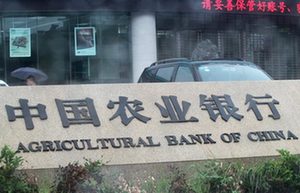New benchmark rate system is needed
Updated: 2014-03-17 07:56
By Yi Xianrong (China Daily)
|
|||||||||||
At the same time, some financial innovations created in this process have not been used to raise the financial sector's capability of serving the real economy, instead they have been used as a tool for evading financial monitoring or for circulating funds within the financial sector in search of greater profits. For example, the recently-popular Yu'ebao, a kind of Internet financial product, seems to have broken government limitations on deposit rates and will increase investors' returns, but it is actually a form of financial resources self-circulation within the financial system. Its creation will help break the current interest rates regulations and push for rates marketization, but its positive effect on the real economy will be very limited.
Quite a few financial innovations have not played a role in promoting the development of the real economy. Instead, their creation, by further extending the money chain, has resulted in excessive credit expansion and thus weakened the role of the financial sector in supporting the real economy and considerably increased the risks of the whole financial system. For example, the current excessive credit expansion by some banks, a serious financial disintermediation, the prevalence of shadow banks, the financing vehicles of local governments, a unreasonable financing structure, as well as a booming Internet financial business, swollen real estate bubbles and the two-track interest rate system are all related to the serious distortion of the pricing mechanism in the domestic financial market and the sluggish marketized reform of interest rates. All these mean that marketized rate reform in China should not be just accelerating deposit rates regulation alone, the country should also try to address a series of thorny institutional problems.
In developed economies such as the United States and European countries, benchmark rates regulated by central banks usually comprise an official benchmark and a marketized benchmark, with both acting as benchmark prices to guide the price changes in their financial markets. However, in China, only one-year deposit and lending rates act as the benchmark. Different from developed economies where their financial market prices can influence their benchmark rates, the prices of financial products in China are all based on its benchmark rates. For example, the prices of China's government bonds yield curve are not based on non-risk returns, but based on its benchmark rates. As far as the country's one-year deposit and lending rates are concerned, it remains unclear what determinants, whether a subjective decision of the leaders or a compromise of interests distribution or data analyses, lead to their final adoption. Under such circumstances, it is difficult for China to ensure an equilibrium price for its financial products as is the case in developed countries.
Aside from lifting the control on deposit rates, China should set a new benchmark rate system to replace the current one-year benchmark rates as a more substantial step toward pushing for the final liberalization of rates. The lack of such a system will seriously hamper steps toward marketized rates reform. The country should also gradually suspend the upper ceiling put on deposits as a key way of accelerating the liberalization of deposit rates. At the same time, a deposit insurance system and the exit and bankruptcy mechanism for financial institutions should be adopted a soon as possible to offer sound institutional arrangements for the marketization of deposit rates.
The author is a researcher with the Institute of Finance and Banking with the Chinese Academy of Social Sciences
 |
 |
Today's Top News
Thai radar may have detected missing jet
Ukraine rejects Crimea treaty
Tourists to be refunded for smog
Chinese authorities upgrade food waste fight
First lady's visit to boost goodwill
Chinese authorities upgrade food waste fight
Xi to sign flurry of deals in Europe
Li vows not to give up plane hunt
Hot Topics
Lunar probe , China growth forecasts, Emission rules get tougher, China seen through 'colored lens', International board,
Editor's Picks

|

|

|

|

|

|





